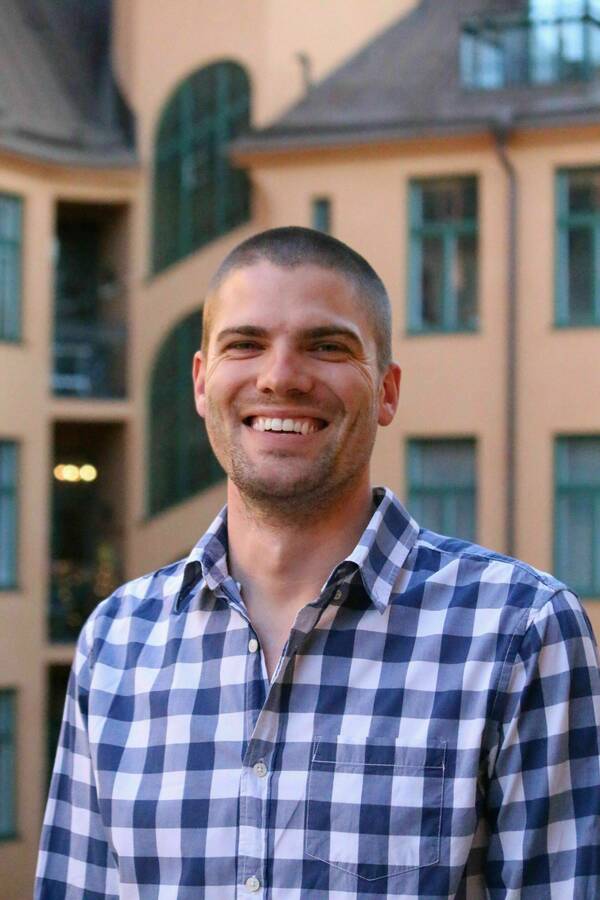British Ecology Society Harper prize awarded to Coverdale for paper describing structural complexity in ecosystems

Imagine a cartoon forest. Does it look like a plantation? Or might there be trees, grasses, small shrubby or scrubby plants — and perhaps a bird or butterfly?
Researchers have long wanted to understand the relationship between the complexity of vegetation and function of the ecosystem. The cartoon forest in your mind likely has significant height differences and three-dimensional structures, known as vegetation structural complexity (VSC). Through a paper that evaluated 13 recent studies, Tyler Coverdale, assistant professor in the Department of Biological Sciences, determined that plant diversity is likely a main driver of VSC.
For this work with co-author Andrew B. Davies, Assistant Professor of Organismic and Evolutionary Biology at Harvard University, Coverdale won the John L. Harper Early Career Researcher Award from the British Ecological Society.
Reviewing 13 papers that used remote sensing — mostly with LiDAR technology, which uses light in the form of a pulsed laser — Coverdale’s paper, Unraveling the relationship between plant diversity and vegetation structural complexity: A review and theoretical framework, showed not only that VSC is related to the health of an ecosystem, but also that even small increases in plant diversity increase VSC.
When he started the project, he wanted to know if vegetation structure is a function of an ecosystem. If there was more biodiversity, might there be more complexity? Is there more complexity in more diverse landscapes?
“And so what we found in the paper is that it is generally true, almost universally true, that more diverse plant communities are more structurally complex,” Coverdale said, adding that the study also sought to define VSC, which had several meanings and metrics. His broad definition, which can include everything from canopy height to openness, can be used for most ecosystems.
According to the study, the relationship between VSC and phytodiversity — the diversity of plants in a community — is almost university positive.
Though this winning paper was the result of reviewing data and other literature, Coverdale said, he and collaborators have recently completed research using remote sensing in eastern and southern Africa to investigate these same patterns in savanna ecosystems, which will be published soon.
While those ecosystems contain a variety of trees and grasses with a lot of structural complexity, the concept can even be demonstrated in suburban yards.
“If you imagine different ecosystems, say your lawn, it has very low structural complexity, all one species, all the same height. If you’re an insect that likes that particular habitat, then it’s great for you — but you have only one option, living in the grass, and that’s it,” Coverdale described. “But if you have a high diversity of vegetation at a bunch of different heights, that allows a huge amount of biodiversity to coexist.
“There’s a lot of available habitat for different species that need different things in more complex habitats.”
Information gleaned from Coverdale’s review paper could guide management and restoration goals, which should include planting a variety of plant and tree species in order to drive variation, Coverdale said. These types of diverse ecosystems will also be able to more readily withstand natural events like droughts and floods.
“One important application of the work is that restoration efforts focused on increasing VSC will lead to benefits to biodiversity as well,” Davies said. “In other words, we can focus efforts on restoring biodiversity through the monitoring of the more easily measured metric of VSC.
Coverdale is grateful to the British Ecological Society for honoring his research.
“My hope is that it’ll draw attention to this idea and spur additional research,” he said. “My lab is certainly continuing work in this area; just having a framework out there will help other people get involved to see how their research can fit in.”
The John L. Harper Prize is given to a researcher who is not more than five years post a doctoral degree. Coverdale earned his doctorate from Princeton University before completing postdoctoral fellowships at Cornell University and Harvard University.
“Tyler executed a large and impressively thorough review of the existing literature from across the globe to answer this important question,” Davies said. “Him being awarded this honor is testament not only to the important scientific work he has accomplished, but also to the quality with which he performed the study. It's well deserved recognition!”
Originally published by at science.nd.edu on May 06, 2024.
Latest Research
- Notre Dame student researcher identifies a mix of factors behind decline in exclusive breastfeeding in GhanaStudies have shown that breastfeeding reduces the risk of asthma, obesity, and type 1 diabetes. It can also reduce the risk of…
- Fifty-two students at Notre Dame will graduate with an energy studies minorThe Center for Sustainable Energy (ND Energy) at the University of Notre Dame…
- Enzyme within cancer cells prevents immune system from fighting diseaseAn enzyme in cancer cells called aconitate decarboxylase (Acod1) appears to cause the release of short chains of amino acids, called peptides, that interfere with the way our bodies’ immune cells fight the disease, a new study by University of Notre Dame cancer biologist Zachary…
- Research and Representation: Senior Alan Avalos finds his passion for neuroscience and for advocacy.Avalos, dressed in a traditional charro suit, performs with Mariachi ND and learned to play the guitar for the group.…
- University awards honor Notre Dame faculty excellenceOn Wednesday (May 15), John T. McGreevy, the Charles and Jill Fischer Provost at the University of Notre Dame, announced the winners of the 2024 faculty…
- Opioid epidemic reaches beyond health impacts to influence politicsVicky Barone, assistant professor of economics at Notre Dame, researched the origins and development of the opioid epidemic and found that the unregulated marketing of potent painkillers led to increased access to prescription opioids and subsequent overdose mortalities. Tracing the long-term consequences of opioid overdose deaths on the political landscape in America, she found an increased support for conservative beliefs and Republican candidates.













